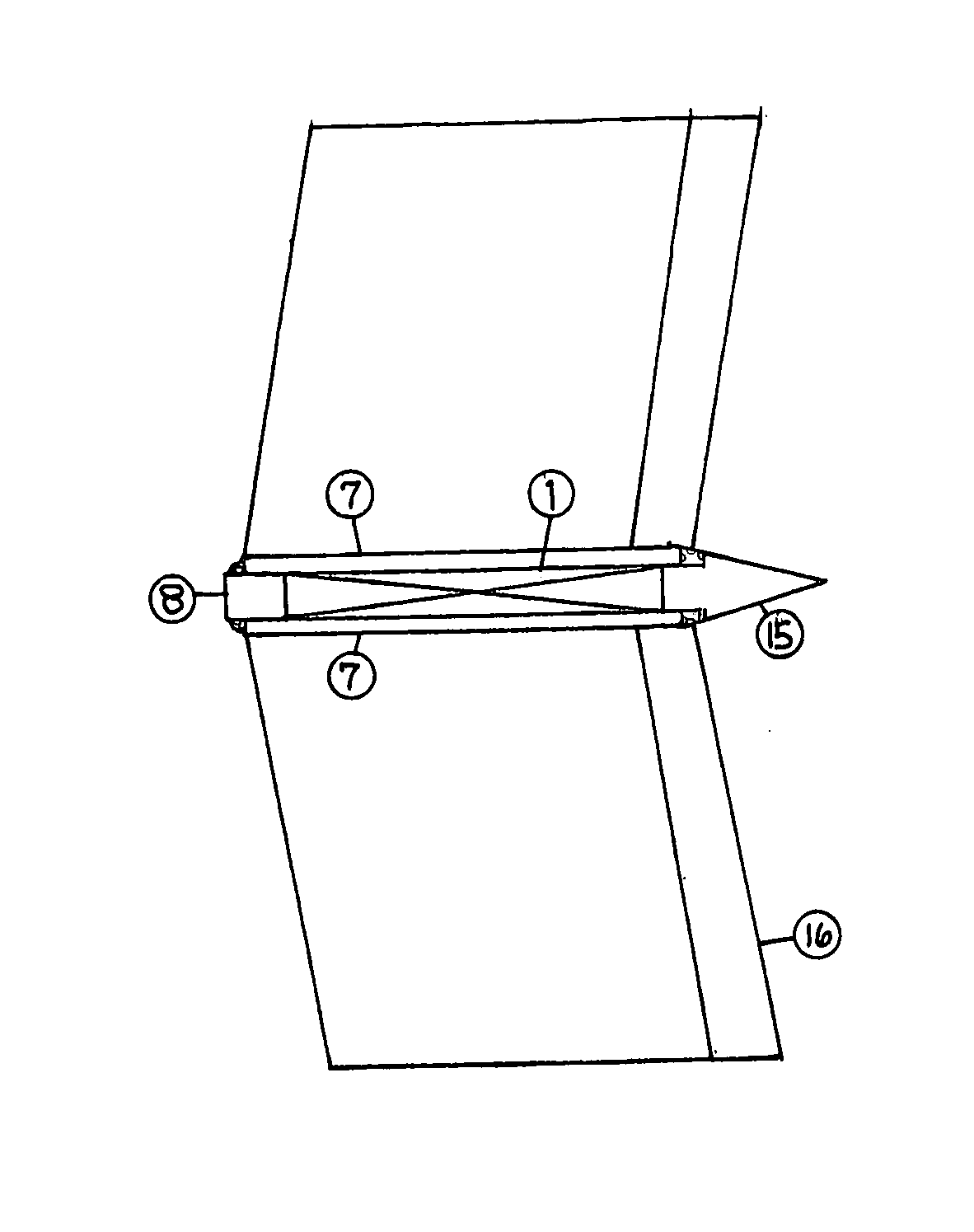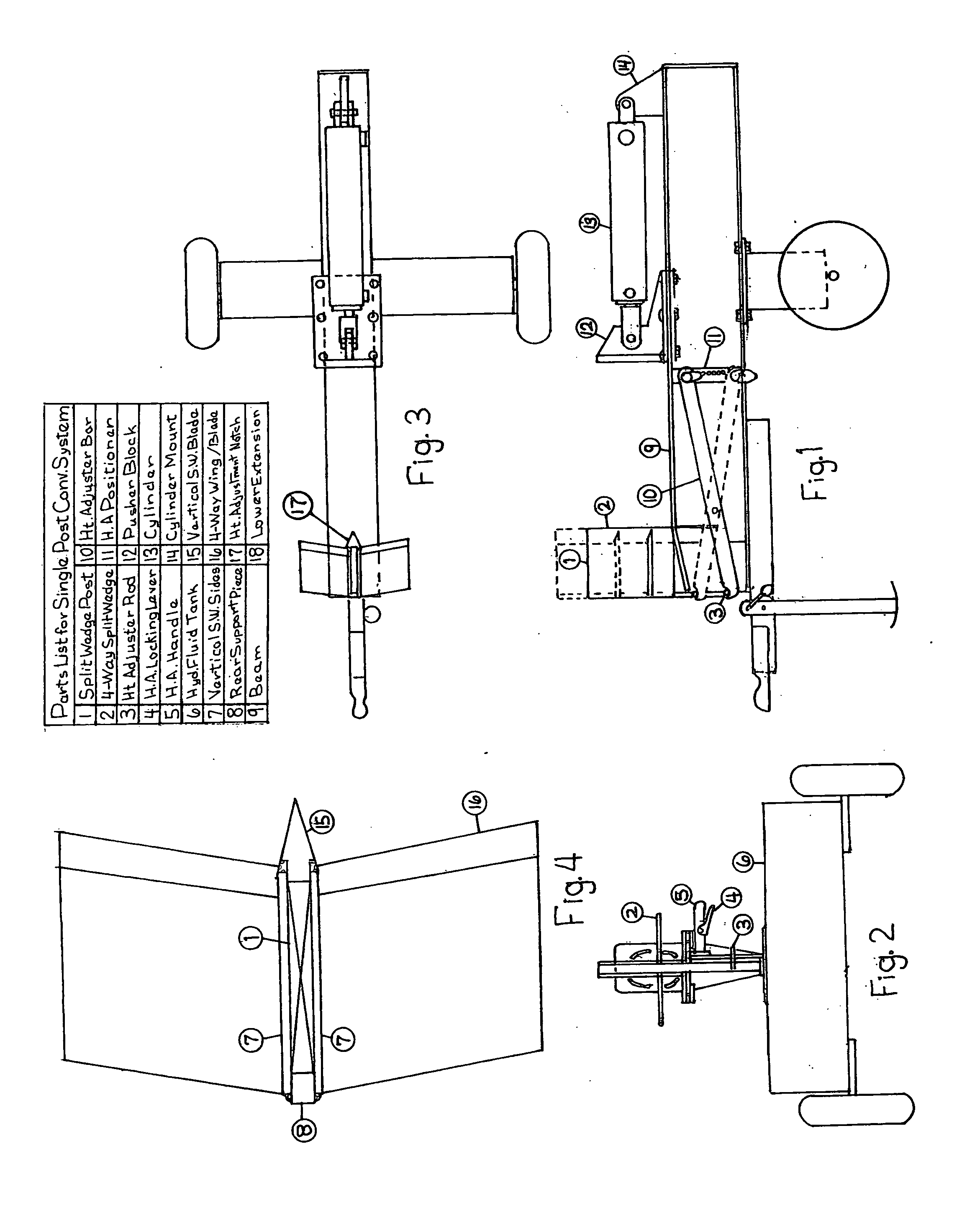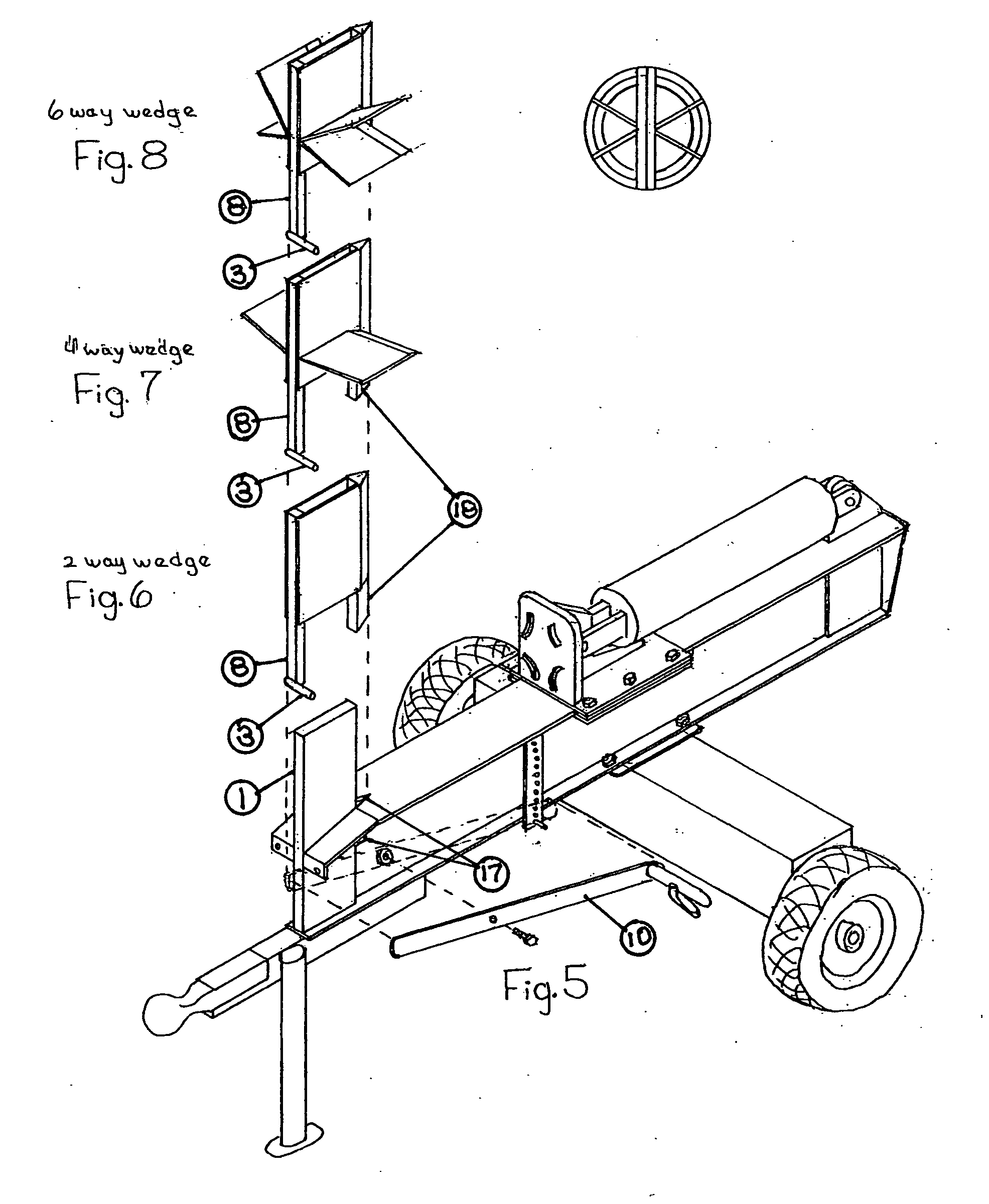Single post convertible split wedge system
a split wedge and single-post technology, applied in wood splitting, multi-purpose machines, manufacturing tools, etc., can solve the problems of insufficient support, insufficient power, and insufficient power, and achieve the effect of less power
- Summary
- Abstract
- Description
- Claims
- Application Information
AI Technical Summary
Benefits of technology
Problems solved by technology
Method used
Image
Examples
Embodiment Construction
[0022]First of all, this basic design of splitter is the standard design of most splitters.
[0023]The differences are, first, in the beam. In this plan it is 11 inches high though the design is not limited to these dimensions. This extra height is necessary to be strong enough to withstand the enormous pressures against the split wedges that are a minimum of 12 inches high and can be raised up to 16 inches high. The beam is notched to accommodate the Split Wedge Post and the cutting edge extensions of the split wedges. The Split Wedge Post (FIGS. 5, 1, No. 1) is angled forward slightly (about 5 degrees here) to keep the logs from raring up as they are forced into the split wedges.
[0024]The pusher block is built of standard construction with spacers and holders bolted to the bottom plate to hold it in place. A large ¾×7×10 HR flat is used for the actual pusher block. It is backed by a 1×10×10 piece of HR flat with a 1 inch hole to attach to the cylinder. Small pieces of steel are weld...
PUM
 Login to View More
Login to View More Abstract
Description
Claims
Application Information
 Login to View More
Login to View More - R&D
- Intellectual Property
- Life Sciences
- Materials
- Tech Scout
- Unparalleled Data Quality
- Higher Quality Content
- 60% Fewer Hallucinations
Browse by: Latest US Patents, China's latest patents, Technical Efficacy Thesaurus, Application Domain, Technology Topic, Popular Technical Reports.
© 2025 PatSnap. All rights reserved.Legal|Privacy policy|Modern Slavery Act Transparency Statement|Sitemap|About US| Contact US: help@patsnap.com



